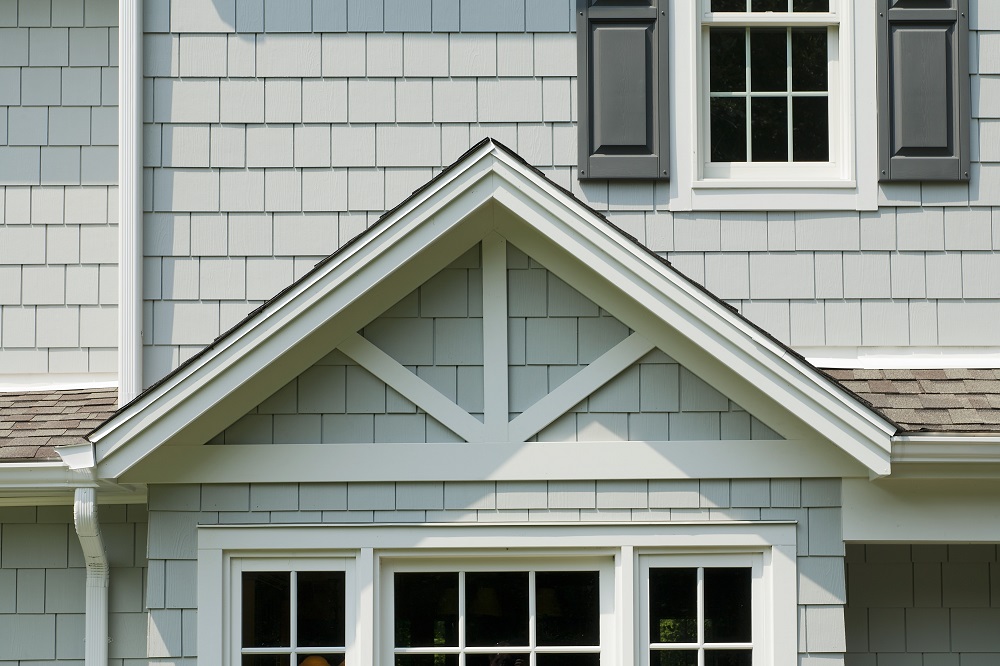Are you searching for how to install James Hardie siding around windows in relation to your Kansas City exterior remodeling project? During my 15 year career at James Hardie I have helped thousands of homeowners renovate the exterior of their home. And when renovating the exterior of your home, there are a number of ways to update its look and feel.
However, one home update with one of the highest returns on investment, is installing James Hardie siding.
Not only will you have a ton of options, but the transformational value of this home upgrade has one of the biggest ‘wow factors’ in all of exterior remodeling.
But when it comes to windows, how do you install Hardie siding around your Kansas City windows and doors?
James Hardie should always be installed by a trained and experienced siding contractor. But if you want to know how it’s done, let’s take a look at the basic steps of installing Hardie siding around windows and doors.
Hardie Siding Installation Tools Needed
You (or more likely your siding contractor) will need a number of tools and supplies to complete the job, including:
- A drill, with drill bits
- Safety gear
- Hammer
- Stapler
- Jigsaw
- Air compressor and hose
- Saw horse
- Kick-Out flashing
- Trim nailer
- Caulk gun
- Chalk line
- Nail gun
- Level
- Speed square
- Fiber cement siding blocks
- Mounting blocks
Get Your Siding Project Organized
Having your project organized is important. It makes things run more smoothly.
Begin by taking measurements of all sides of each window. Work out the square foot area that will then cover each window with the siding. This allows you to know exactly how much Hardie siding you require to complete the job.
Getting Started
The first physical part involves removing any old trim, if you already have some on. Use a knife to cut around at the join between the trim and the wall. Don’t try and cut anywhere else. It can damage paint and caulk if you do.
Once you create a gap, get a pry bar and gently ease things off. Once you remove the trim, pull out any nails that remain.
Measuring the Trim
After the area is clear, you need to measure the trim for the window. Now, you should have done this earlier on, but you need to double check the measurements. There’s no room for error here.
Cutting the Trim
Get your safety equipment on, and use a conventional saw to trim the boards. Look at using a blade designed for cutting fiber cement board. The blades are designed to reduce dust and have less chance of ripping the board while cutting it, providing you with a smoother finish.
Put your speed square on the lines that you measured on the board.
Installing the Trim
The best option is to use James Hardie Colorplus trim with a 15 year finish warranty. However Hardietrim can be painted and if you plan on painting the trim, now is the time to do it. Also, check for any damage before you install.
When you do install, attach the trim by using two-inch 16-gauge exterior rated finish nails. Do this roughly every 12 to 16 inches. This will mean the trim is flat across its entire length.
But there’s one other thing that many inexperienced siding and window companies do not do. On the top of your window or door DO NOT install the trim tight to the siding. Leave a ¼ inch of a gap and do not caulk this gap. This allows moisture to get out, and it can stop mold. Caulking above windows not only voids James Hardie’s warranty it will lead to moisture damage and problems. James Hardie siding and trim are designed to shed water and allow moisture to drain. Gravity is undefeated.
After this, you need to place the actual top post across the two vertical blocks. Extend this all the way down the bottom sides of the actual trim.
Once this has been completed, you should then look at applying the shims. This will then make the wall and flange even.
Adding the Flashing
Before the siding has been installed, you then need to add the flashing. This is critically important to prevent rain from getting into your home, so it does offer a significant amount of protection to your home from the weather. The most important thing is to remember and install the flashing on the top horizontal trim board and tuck it under the housewrap and use seam tape to seal it. This gives the greatest protection, no matter the angle the weather is hitting your home at.
And that’s it. You simply repeat this process on each window. It may sound like a lot, but the steps are straightforward, and the result is there for all to see.
Of course, if you feel that this task involves too many steps, you can always seek professional help to make sure that everything is done to perfection.
Caulking and Finishing
The final step is to caulk the sides of trim where it meets the siding. James Hardie Colorplus Trim recommends OSI Quad Max. Not everyone does this, but it does make everything look finished.
Get your caulk gun, and work your way around the seams on each window. Make sure you have a small nozzle cut into the caulk gun. It just makes it easier to get into each part.
The most important thing is to apply it at around a 45 degree angle, and do not wipe away excess.
High quality caulks are designed to settle naturally and wiping them can cause them to fade prematurely.
Need help with your exterior home siding project? Contact the James Hardie pros at Fairway Exteriors for a free siding estimate.









